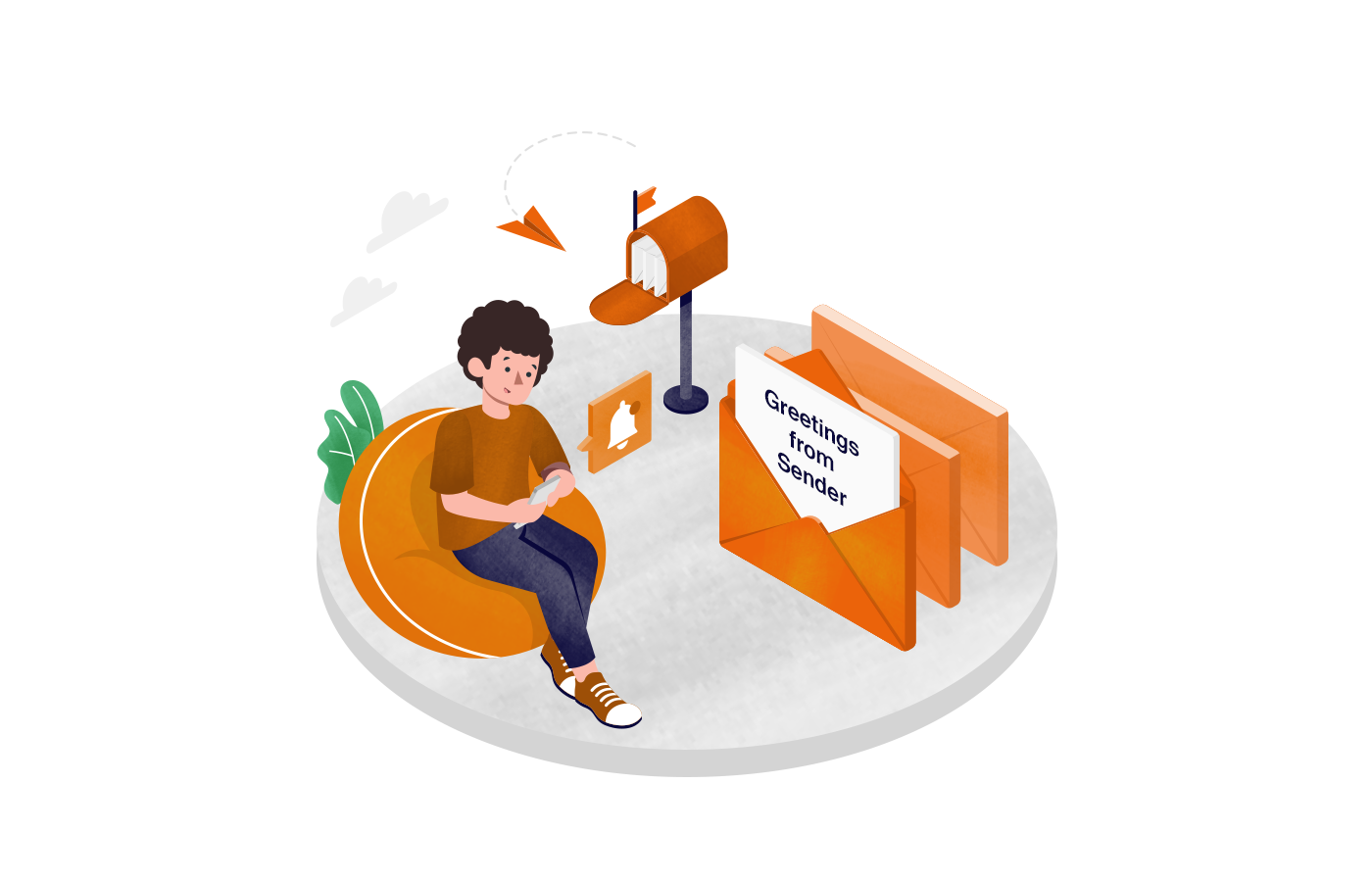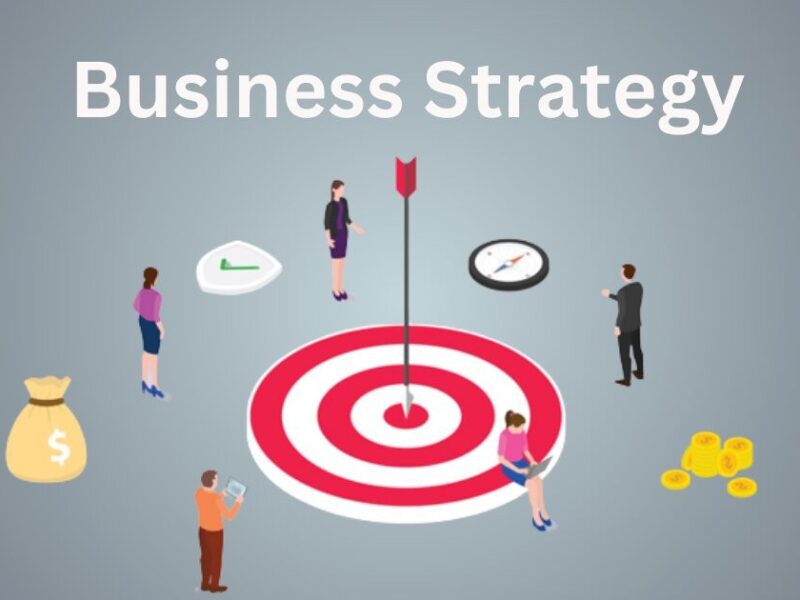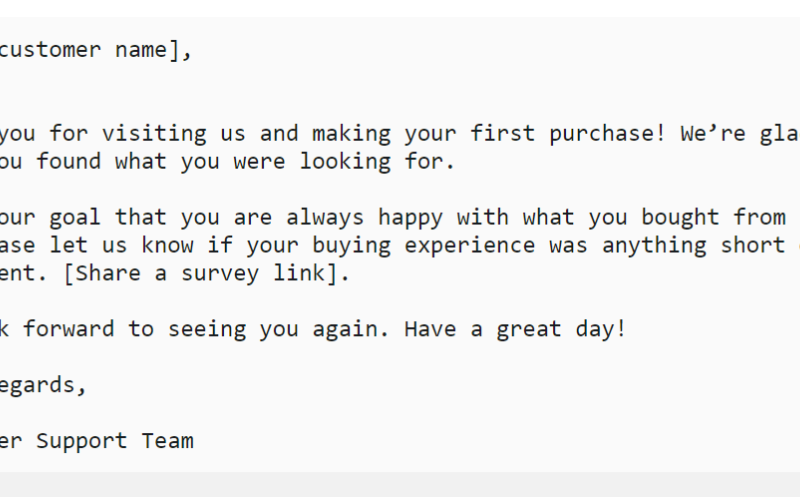If you’re not expecting a phone call, are you likely to answer it?
If it’s convenient sure, maybe. But how often is it convenient to talk to a stranger on the phone?
The same logic applies to your email marketing strategy.
In 2017, if you’re still sending your subscribers email that proves you don’t know them, you may as well start ringing the phone book again.
At worst they’ll unsubscribe, and at best you’ll have to unsubscribe them, because they haven’t opened an email from you in years.
Why Trigger Email Marketing Is So Important
Trigger email reduces the likelihood of the above outcome. It’s sent based on your subscribers actual online behaviour and in response to their recent purchase history.
Based on your customers preferences and profile, it’s also delivered at a time when they’re expecting it, and when they are most likely to read it.
Because of these core truths, trigger email campaigns have been proven to deliver the following for online businesses:
- increased customer engagement
- higher acquisition
- better retention
- more upsell opportunities.
From an ROI point of view, it makes huge sense.
A new report even reveals that trigger emails can generate 5 times the click-through, almost double the open rate and triple the click-to-open rate of non-trigger or Business As Usual (BAU) communications
Average order value’s (AOV’s) of trigger emails are also superior to BAU’s, outperforming them by a value of $61.54 to $56.34 per transaction.
Despite these numbers, it’s estimated that only 7% of total campaigns use trigger, or automated mail outs.
It all means that trigger emails represent a huge opportunity to stand out right now.
But wait, the usual rules still apply…
At the risk of stating the obvious, in trigger email campaigns, the usual rules of effective email marketing still apply. Sending trigger emails of poor quality will still get you binned and hurt your brand.
And, in case you were on the fence about email as an effective marketing tool before you even started reading, know this: email isn’t dead, it’s just changing.
Check out these two facts:
- Email remains the method of communicating with companies that most people still prefer – 72% of US adults according to a study by Marketing Sherpa.
- 87% of 35-44 year-old male respondents would prefer to get something in their inbox than anywhere else from a brand.
That’s buying power you can’t ignore.
Email also continues to outperform social media, despite the hype, meaning effective messaging direct to your subscribers inbox – where according to Adobe, we’re all spending more time than ever – remains the best way to:
- Build trust in your brand
- Engage customers for longer
- Drive sales based on quality interactions.
Ecommerce leader Shopify agrees, and all of it translates to profit. So, without further ado, here are:
7 Trigger Emails You Should Be Using For Your Ecommerce Shop.
REMAINING READ TIME: 10 mins
1. Welcome
Look at that picture of 007 above.
First impressions count. And apparently we have 7 seconds to make one, so tread carefully.
The Welcome email is your chance to set the tone of your future relationship. Consider it pre-marriage counselling you haven’t paid for, which means don’t go all out on the first date. Be sure to hold something back so they’ll want to see you again.
Recently we published 14 Examples To Help You Craft the Perfect Welcome Email. We recommend giving it a read, because a good welcome email is crucial. By these numbers from Experian, Welcome Emails have an open rate 4 times higher and a click rate 5 times higher than most other emails you’ll ever send. Don’t waste it.
Because people expect it within minutes of subscribing, it’s literally the very first point of contact people might have with your service, so try to avoid the hard sell, which is mostly always off putting. It should primarily be:
- Confirmation that you’ve begun your relationship with each other
- A reminder of the benefits of your service
- An opportunity to confirm the opt-in
If you plan to send a series, like many people do, start considering what value this adds to the process. The double opt-in is the gold standard of email lists, but striking the right tone is crucial. Here are three quick tips:
- Offer something you know they’ll want. This will help keep the lines of communication open for future emails.
- Strike while the iron is hot. Tell them you’ll send the first welcome email immediately, and then do it.
- Remind them of your social media pipes. An engaged customer is a good customer.
And remember, avoid using language that will get your very first email sent to spam!
Ain’t nothing wrong with keeping it simple either.
NordicTrack do exactly that in the above example of an effective welcome email. Everything a subscriber could want is there, it’s not asking for anything but at the same it’s reassuring, professional and would likely encourage users to click on one of their social media channels.
Uber’s welcome email establishes the user-friendly nature of their service while including an incentive to download the app. It keeps it simple, which is what they want their users to think about Uber.
2. Abandoned Cart Series
Abandoned shopping carts are part and parcel of running any ecommerce business. Ever been distracted? Disconnected? Unsure?
Don’t take it personally; The Baymard Institute figured out that the average rate of abandonment was just over 67%! This means that for every 100 dollars you earned, another $67 was potentially left in the cart.
Aside from fixing the issues, which can be a simple as removing the amount of clutter on the screen, (unlike the image above) another way of getting a second bite at the sale is a carefully constructed abandoned cart email, triggered no more than 24 hours after your shopper has failed to go through with a purchase.
Sometimes that’s all it takes to remind customers to proceed to checkout.
However, because it’s not always as simple as that, and because it’s so common, at MageMail we actually specialize in this element of revenue protection. That’s right, it is revenue you need to protect.
Check out our piece 10 Of The Best Performing Abandoned Cart Emails to find out how you can be recovering more of this lost revenue. So far we’ve recovered over $60M for our customers, with the average client recovering 15% of total abandoned cart sales.
In the featured case study we pick out the top performing Magento ecommerce stores using MageMail as their abandoned cart software and analyse the best performing emails getting them great results.
Before you read it, here are some quick rules on what to put in an email in order to maximize abandoned cart conversions:
- A link to return to the cart, or at least a reminder of what the customer was purchasing before they abandoned the sale.
- An offer of a reward or an incentive. Be careful with this, you don’t want to train customers to ‘bail out’ every time.
- An implication of high demand for the item. Make it feel urgent, but not too urgent – you don’t want to turn them off.
- A positive user review for the product(s) they were about to buy. This is basic human nature.
If the first email doesn’t work, trigger a second reminder within 72 hours of the original abandonment, gently reminding them that their cart will be cleared soon. You may just have caught them at a bad time with the original.
This example by Casper doesn’t scream at anyone. It’s a gentle reminder, in keeping with their brand philosophy of getting a good night’s sleep, and offers a humorous value-add via a product review at the bottom, reminding customers of a key benefit.
3. The After Sale Follow Up
Ever bought something and then proceeded to see it everywhere? This is our subconscious providing positive reinforcement of our purchase decision. It’s something smart advertisers are well aware of, and harnessed well, it can create evangelists.
It’s for this reason that a nice, friendly follow-up email triggered by any purchase from your online store is an easy way to show you care about customers ongoing satisfaction, and to reinforce their buying behaviour.
Depending on your industry, the follow-up might be a series of as many as four emails, including:
- Order confirmation
- Shipping notification
- Delivery notification
- The friendly follow up
These all add a sense of security, professionalism and increase the likelihood that they’ll order from you again.
If your service is similar to others, do your best to increase the warm and fuzzies without coming off as desperate for their repeat business. In these cases, a discount voucher on their next purchase always produces great results.
Remember that all transactional emails like this are an opportunity to cross-sell and increase the level of personalisation. As long as they are:
- Timely: Customers receive right after they’ve taken action.
- Relevant: Personalised to the recipient.
- Informed: Using customer data.
- Actionable: A clear all-to-action.
It immediately does the following things:
- acknowledges purchase
- confirms order details
- asks for feedback (and steps out the process)
- makes an offer by incentivising the process
- provides the opportunity to explore the brand offering further
All while striking a friendly and not overly aggressive tone. The point being, this follow up email contains value, and that’s what makes it successful.
4. Re-engagement aka ‘The Win Back’
Life gets busy. And competition for shopper’s attention is fierce. Don’t be surprised when large parts of your list fall into the ‘inactive’ category.
To win them back, you need a solid ‘win-back’ email campaign. We recommend you read our article 8 Essentials For An Effective Win-Back Email Campaign for some great ideas.
For subscribers who’ve lapsed into ‘inactive’, an email should be triggered at this point you might like to title ‘We Miss You’ or ‘A friendly reminder’.
The good thing about these people is that they know who you are; they just haven’t thought of you for a while. It happens, don’t come off angry.
Depending on whether they’ve purchased before, these triggered win-back emails should be personalised, or offer an incentive to get back ‘involved’. If it’s been a while, you can probably afford to be a little more aggressive in terms of what you offer.
Triggered win-back emails are also a fertile testing ground for you to play around with response metrics. Is it a direct offer, or an acknowledgement that ‘we’ve both been busy’, followed by an invite to see ‘what’s new’?
You decide, then see what works best. In many cases you have literally nothing to lose – as long as you aren’t spamming.
If you opt for a series of 2 or 3 and no action is taken and none of the emails have been opened, you need to consider sending a removal notification. You don’t need inactive members cluttering up your list.
5. Educational Content
If you want to build rapport and expertise in your field, these are a must. Be warned though, they’re not about making a ‘quick-buck’.
A cool business-to-business opportunity, a well-timed email about a topic relevant to the subscriber’s interests will aid recall of your brand and add credibility amongst your peers if carefully targeted.
Topics might be complementary to your inventory, eg. maintenance tips, how to get the most out of their purchase or ‘suggested serving’ type information.
Alternatively, if your audience loves quality, shareable content, it might serve you to curate a ‘best in class’ type email that users will gain kudos from amongst their own social networks. Be careful that these don’t stray too far from the original interaction however. It’s a fine line between building community and being irrelevant. Proceed with caution.
Spotify add value here by using their data to create a deeper level of personalisation about something people love – their music!
It doesn’t ask the user to do anything but still gives away more value by creating a playlist of their best music, encouraging users to stay on the platform. Very clever.
6. Upsell Offers
The best ecommerce operators will always send Upsell offers based on any number of metrics. It’s another effective way of mining the customer base you already have, rather than investing the money you’ve already spent, again, on finding newbies.
Customers who spent to a certain threshold on previous purchase might receive an opportunity to do the same for extra value, which is a great way of creating trust and familiarity with the purchase gateway of your site.
Already Brand Loyal customers might enjoy receiving an email like the below from Harry’s, where they can enjoy the chance to invest in a ‘family’ of brand extensions. These may or not be made exclusive to subscribers only. Either way, it’s important to add perceived value.
Upselling in whatever form it takes should be approached with caution. Immediately ramming offers down the throats of your customers because they made one purchase a few days ago is probably not the way to go. We cannot all be Amazon! That said, don’t wait until they’ve forgotten about you and moved on.
7. Relevant Information & Updates
Last but certainly not least, these are the very reason people subscribed to your Ecommerce store in the first place.
It’s important that you follow up quickly once a subscriber has opted-in to your list, but it’s equally important that anything you send is relevant to them – too many irrelevant messages too quickly is coming on too strong, and they may end the relationship suddenly.
This is also where correct segmentation of your list is crucial, and should be a part of your welcome series, as long as the information you’re asking for is not too intrusive.
To grab attention, consider these quick tactics:
- Imply urgency and exclusivity in the title
- Give reasons for reading on immediately (almost like a synopsis)
- Make the Call to Action clear and easy to execute
Visuals are extremely important in these types of emails too. Ensure that the content you put out in these trigger mails is of a standard that reflects not only your brand, but also your desired customer base.
If you expect your subscribers to take the time to read your email, make sure you take the time to make it look visually appealing and easy to read.
Also, ensure that these messages are short. No one likes a time-waster.
J.Crew do a good job here by making clear suggestions on how to use their products, use an attractive graphic and incentivise a store visit. This particular email would also double as great example of a potential pre-purchase email. Shoppers in this category love to research before buying. Know your audience!
Final Thoughts
Remember, trigger emails should be considered a vital part of any integrated marketing approach with the ultimate aim of increasing sales.
They relieve marketing teams of having to manually send messages, but should be personalised, always engaging and never misleading. They should make offers your online shop can support and delivered at the best possible moment.
To achieve this, they should be expertly segmented and highly targeted so as to avoid what experts might call ‘communication wastage’ and be optimised to appear across multiple devices.



